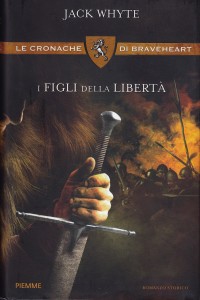The Guardians Series–Introduction

The success of the Braveheart movie triggered changes in the traditional way Scots history had been perceived for hundreds of years, because in 1997, two years after the release of the film, the long-awaited Museum of Scotland opened its doors to reveal that there was not a single item to do with William Wallace in the entire place. All of Scotland was stunned by the discovery of such an egregious oversight, and the omission, stirred up and fulminated over by the Media, set off a tsunami of protest and outrage among the populace. When all the recriminations and fingerprinting had died away, though, the truth came out, and no one could dispute it:- Over the course of the past 700 years, the legend of “The Wallace” had overwhelmed the historical truth about the man, William Wallace, and there was very little—in fact nothing at all of any real substance—that could be said about who and what the real, human William Wallace really was.
We have nothing today that belonged to Wallace. Everything he might have owned or touched has either rotted, corroded or rusted away to nothing in the 700-plus years since he died, and even the few remaining buildings and sites where legend and lore say he lived and worked have fallen into rubble, mere outlines of ancient foundation walls that might, perhaps, once upon a time have belonged to, or been known by, William Wallace. And the sad truth underlying the absence of any trace of Wallace in the Museum of Scotland is that for the past two hundred years, no academic or classical historian who valued his reputation dared make any categorical statement on any aspect of Wallace’s life or achievements. It would have been academic suicide.
The Braveheart furore, though, has changed all that, and there is an entirely new wave of investigative research ongoing now into what little we do know of the great Champion. Everything that pertains to him and his activities in any way is now being scrutinized and analysed and re-interpreted in the light of 21st Century technology and sensibilities, and much of the new findings that have already emerged is raising academic eyebrows and forcing many dyed-in-the-wool skeptics to re-examine the evidence being uncovered.
Wallace, whatever kind of man he might have been in person, is one of the only two heroes to have emerged from the Middle Ages as household names. The other is William Tell, of Switzerland, but William Wallace of Scotland is generally recognized, and not merely because of the Braveheart movie, as one of the giants of medieval times and one of the greatest popular heroes of all time. He lived a huge life, in extraordinary times, and he and a few of his contemporaries changed the history of Europe, and arguably of the entire Western World, through their personal involvement and exploits in the struggle known as the Scottish War of Independence. Those men, Wallace, Robert the Bruce, Andrew Murray and Sir James Douglas, rank among the giants of our history, and it is their stories that form the series I have called The Guardians.